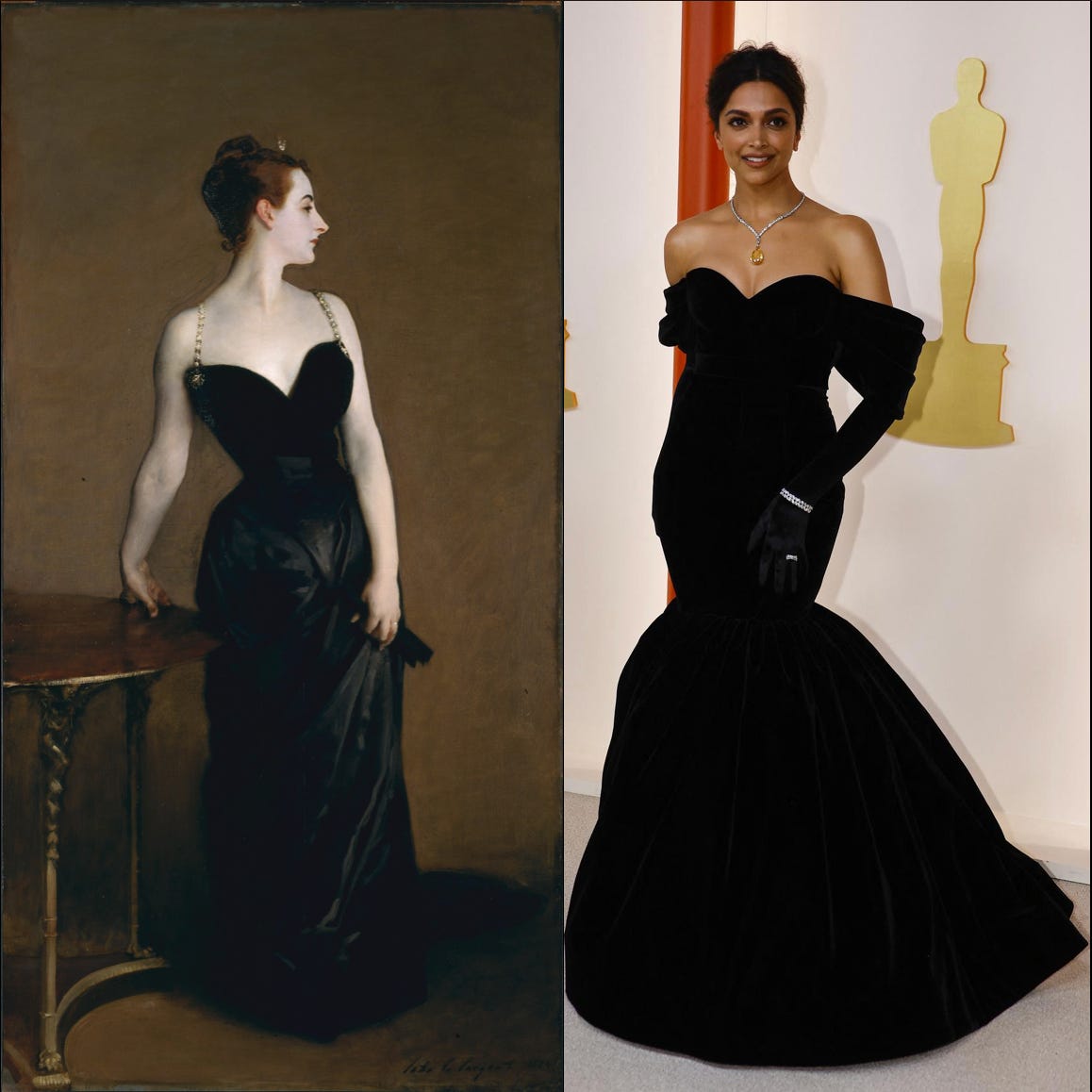Portrait of Madame X
A Parisian woman's unconventional portrait, has over the years, spawned multiple spin-offs. Here is one strenuous connect.
This is a story about a ‘promiscuous’ woman posing in a slinky, low-cut black dress, revealing a hint of her bare shoulder. Her skin is pale, almost translucent, and contrasts sharply with the black of her dress. Her hair is swept up into an intricate braided hairstyle, held in place with jewelled pins. Her pose is confident and commanding, with her head tilted slightly to the side, and her eyes gazing off into the distance.
The Paris Salon started way back in 1667, but it was only in the next century that it became an annual affair, and it was only around the French Revolution that it was opened to all French artists for the first time. It was the epoch of belief. It was quite the epoch of incredulity. As the walls of gatekeeping were slowly torn down with the march of time, it ruffled a few feathers along the way.
Virginie Amélie Avegno Gautreau was born in New Orleans. Her father passed away while serving in the American Civil War. Her widowed mother decided to leave the USA and move to France where young Virginie began rubbing shoulders with the fabled high society of Paris. She married a banker but continued to attract the amorous attention of the city’s haut monde.
One of those dalliances included Samuel Jean Pozzi, a surgeon and gynaecologist who befriended the likes of Sarah Bernhardt and Marcel Proust. His hobnobbing with the creme de la creme can be gauged by an impressive portrait of him, done by one John Singer Sargent, an American expatriate artist looking to make a name for himself in the world of art.
Sargent approached Pozzi, to get him connected to Madame Gautreau, in an attempt to capitalise on her notoriety. The painting was initially intended to be a straightforward portrait, but Sargent decided to add the provocative element of the low-cut dress, designed by the famous couturier, Charles Frederick Worth. This decision would prove to be a controversial one.
He sent it as his entry for the 1884 Salon, a disastrous debut if ever there was one. The painting was criticised for being too sensual, with some critics finding it vulgar and inappropriate. The pose and the dress were seen as scandalous. Like every other civilised society of the world, the Parisians who indulged themselves in her saucy stories as published in the tabloid scandal sheets and gossip handbills, and whispered about her vital statistics, were suddenly outraged to see her in this avatar.
The painting caused such a furore that Sargent was forced to make suitable changes. He kept the original out of the public eye for more than two decades. He altered the position of the shoulder strap to make it appear more securely fastened in an acceptable location and added a jewelled strap to the other shoulder to balance the composition.
In 1960, actress Dina Merrill posed in a replica of the same gown designed by Cuban-American fashion designer Luis Estévez for photographer Milton H. Greene, published in Life magazine. Over the years, many celebrities have sported the look and made it their own.
Sargent finally sold the “Portrait of Madame X” to the Metropolitan Museum of Art, writing to its director, "I suppose it is the best thing I have ever done”. This was in 1916, a year after its model passed away and roughly around the time when RRR is set, which Deepika Padukone was seen speaking about in this elegant Louis Vuitton gown, albeit modified, more to the tune of the “Little Black Dress”, another fabled Parisian export.



